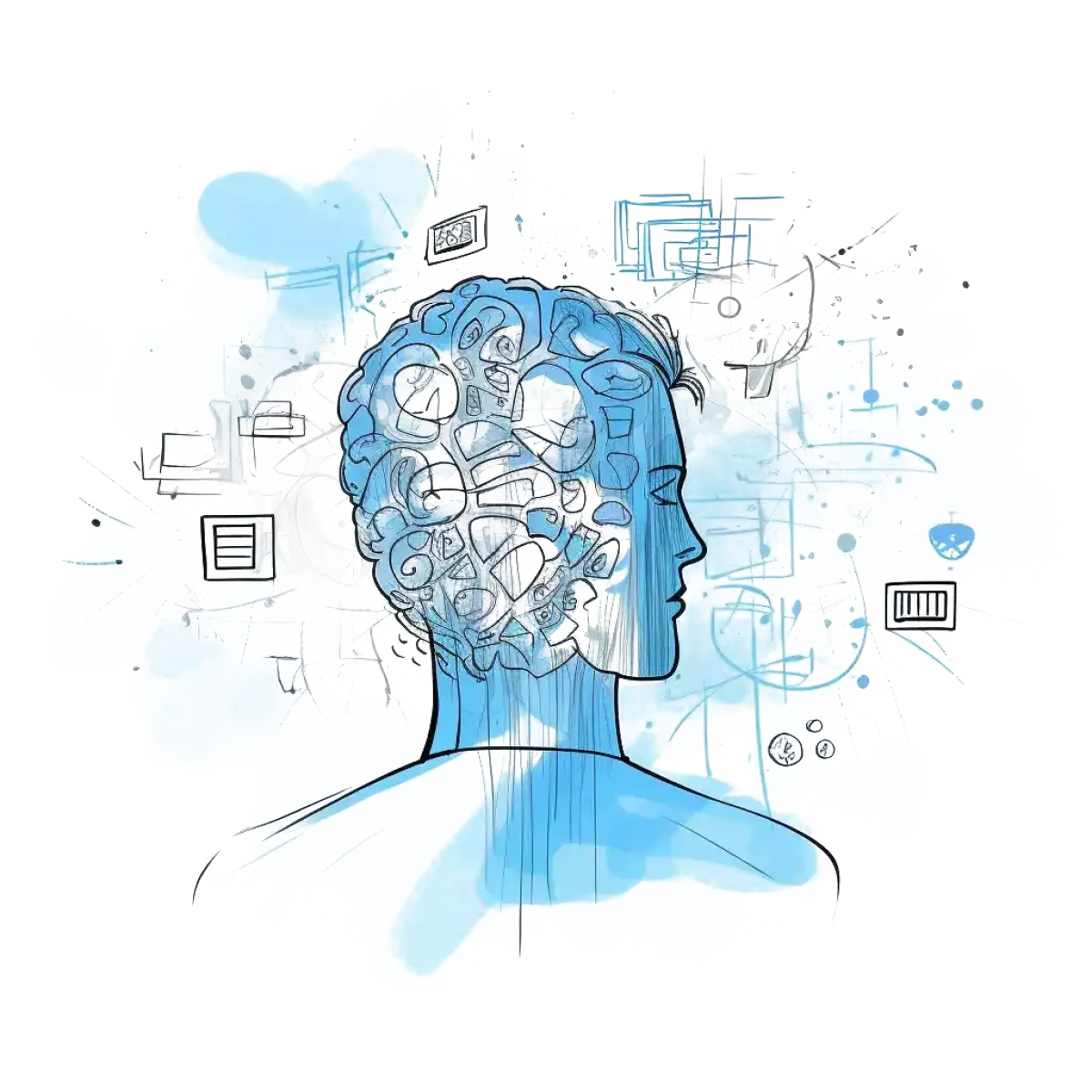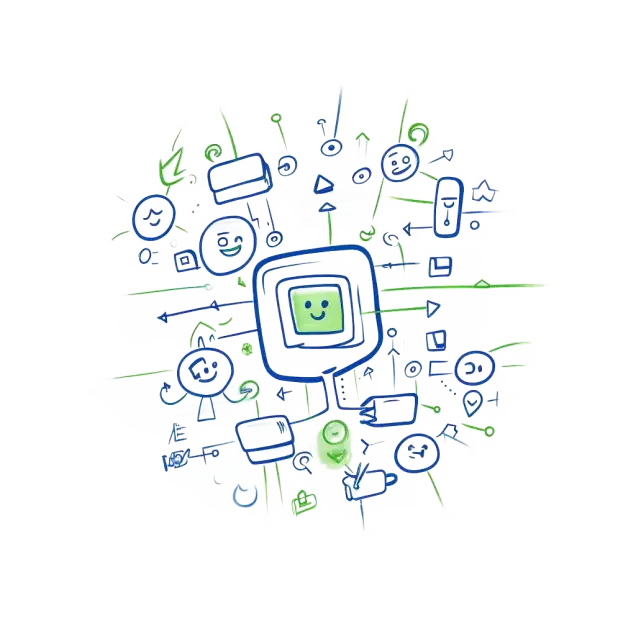Are you already using the potential of artificial intelligence?
Artificial Intelligence (AI) can help you increase revenue or save costs. The possibilities range from savings through process optimization to automated customer experiences.
Talk to usAI as a Value Driver for Companies
Efficiency Increase and Automation
AI systems can automate routine and data-intensive tasks that were previously performed manually. This can range from data analysis to customer inquiries to warehouse management. This can save companies time, reduce human errors, and ultimately reduce costs.
Data Analysis and Decision Making
AI systems are capable of repeating a wide variety of tasks without fatigue, distraction, or error.
Improvement of the customer experience
AI can contribute to personalizing and optimizing the customer experience. For example, chatbots can answer customer inquiries around the clock, while recommendation systems on websites and apps can offer individually tailored product suggestions. This leads to higher customer satisfaction and retention.
Promotion of Innovation
AI enables companies to develop new products, services and business models that would not be possible without this technology. Whether through the development of new applications, such as personalized health solutions, or by improving existing products - AI can serve as a catalyst for innovation and competitive advantage.
Voicification
In a digitally networked world where user comfort and seamless interaction are paramount, voicification offers companies a groundbreaking opportunity to connect with customers. By adding voice technologies to your platforms and services, you can increase user engagement, improve customer service, and find innovative ways to stand out. Don't miss the trend of the voice revolution! Start integrating voice technologies today and put yourself at the forefront of digital transformation. Act now and leave your competition behind!
Integration into existing systems
The integration of speech technologies into existing systems requires specific tools and interfaces. APIs and SDKs play a crucial role here. They provide developers with the necessary flexibility to seamlessly integrate voice features into their applications, websites, or platforms. In today's diversified digital landscape, multi-platform compatibility is also essential. Speech solutions must function consistently across different devices and operating systems, from smartphones to smart home devices. At the same time, security must not be neglected, as speech often contains very personal information. Strict security measures are therefore necessary to ensure data protection and the integrity of user data. Finally, advanced speech systems enable high adaptability. Companies can and should use this to tailor the technology to their specific requirements and goals, to ensure a unique and optimal user experience.
Voice & Chatbots
Automated Customer Interaction: Voice and Chatbots in the Modern Business Environment
In today's digital age, companies are looking for efficient and cost-effective ways to interact with their customers. Voice and chatbots offer an automated solution that allows customer inquiries to be answered around the clock without human intervention. By using these technologies, companies can improve customer service, save resources, and ensure a constant and fast response time.
Core differences between chatbots and voicebots: Text vs. Speech
While both technologies represent automated forms of communication, they differ in the type of interaction. Chatbots communicate text-based via messenger platforms, websites, or apps. Voicebots, on the other hand, use speech recognition technology to process verbal instructions or inquiries from users, often through voice assistants or phone hotlines.
Classification of Voice and Chatbots: From Simple to Specialized
Voice and chatbots can be divided into different categories, depending on their complexity and function. Simple bots follow a set script and respond to specific commands or questions. Advanced bots use Artificial Intelligence (AI) and Natural Language Processing (NLP) to understand complex requests and deliver contextually relevant responses. There are also specialized bots developed for specific industries or applications, such as booking bots or customer service bots.
Generative AI (LLM)
In a time of rapid technological developments, generative AI, especially through Language Models (LLM) like GPT-4 from OpenAI, is in the spotlight. These advanced models have the ability to generate texts, images, and more, often with a quality that is barely distinguishable from human creations. This technology is used in everything from the creative industry to the financial world, revolutionizing business processes.
Image generating models: With models like DALL-E, companies can generate images based on specific text descriptions. The potential ranges from design drafts to creative advertising campaigns.
Music and audio generating models: These models are capable of creating music or soundscapes, which is particularly useful in the entertainment and media industry.
Fine-tuning Tools: These tools allow companies to further train generative models with their own specific data to achieve more accurate and relevant results.
APIs: Application Programming Interfaces, like the one offered by OpenAI for GPT-3, enable the strength of generative AI to be integrated directly into existing systems and applications.
Clear definition of the use case: A clear objective and definition of where and how the AI should be used is crucial to avoid misinvestments and unwanted results.
Continuous monitoring: Even the best models can make mistakes. It is important to regularly review and adjust generated content if necessary.
Conversational AI
Conversational AI, also known as conversational artificial intelligence, enables machines to conduct human-like dialogues and interactions. It revolutionizes the way companies communicate with customers and offers entirely new possibilities for automation and personalization.
Chatbots
Text-based interaction models, usually found on websites or in messaging apps.
Voicebots
Based on speech recognition and enables verbal interactions, often via voice assistants.
Multimodal Bots
Combine text and speech to provide a comprehensive experience across different platforms.
Social Media Bots
Specialized bots for platforms such as Facebook or Twitter that perform automatic interactions such as message replies or post shares.
Benefits of Conversational AI for Your Business
- More efficient customer service
Through the use of conversational AI, customer inquiries can be processed around the clock without human intervention, saving resources and increasing customer satisfaction. - Cost reduction
In the long term, companies can save considerable costs by automating repetitive and time-consuming tasks. - Personalized customer experience
With advanced algorithms, individual customer preferences can be recognized and adapted, leading to a personalized customer experience. - Scaling of communication
Companies can conduct countless conversations simultaneously without incurring additional costs.

















